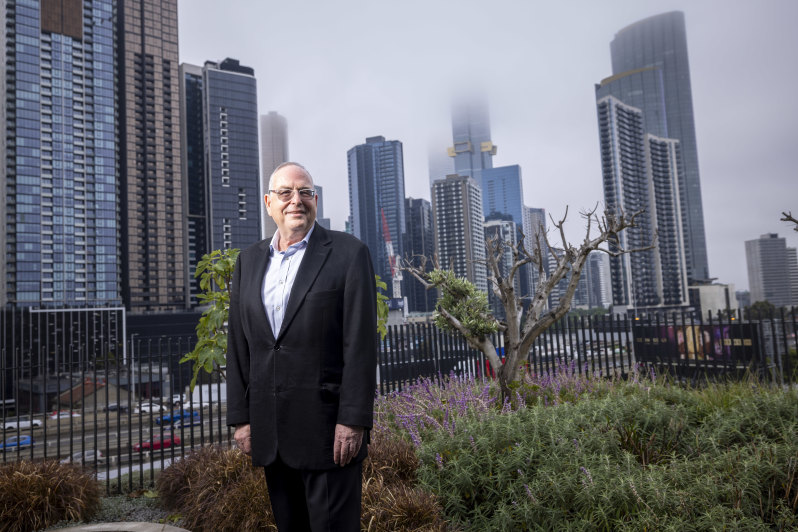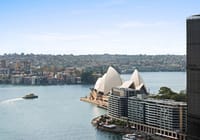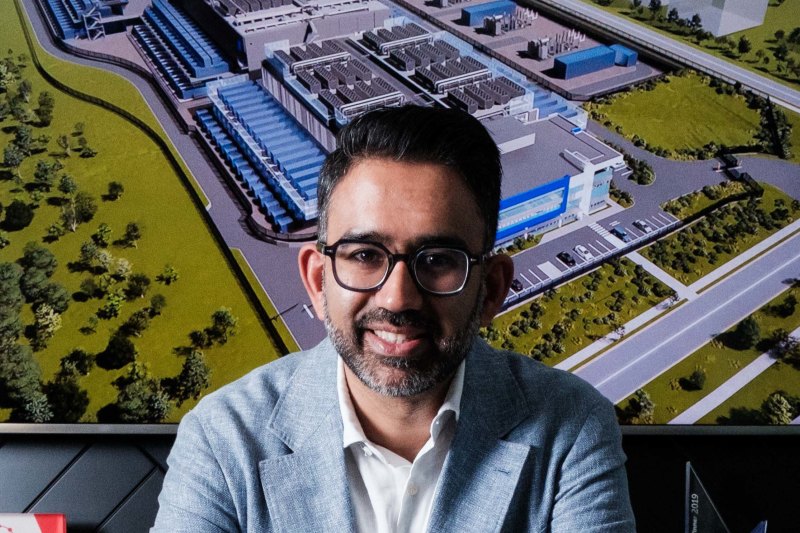
Housing targets at risk as building stalls at decade-low pace
Home building will grind to its slowest pace in more than a decade in 2024 as the higher cost of materials, land and finance make it harder for developers to build dwellings profitably, raising doubts about the government’s ambitious housing targets.
Australia’s housing shortfall, expected to be at least 175,000 homes by 2027, reflects the failure to meet the key drivers of demand including smaller household sizes and the post-pandemic migration surge.

“There’s no question that the demand side is there,” said Benni Aroni, the developer of Melbourne’s Eureka Tower. “The problem is that we just can’t make a feasibility work. And we can’t make a feasibility work because we haven’t [got] stability of cost and the cost of finance. And neither of those is going anywhere south in the next 12 to 24 months.”
The cost of building a new house is still rising, although at a slower pace than the surge experienced two years ago, Housing Industry Association figures show.
The average value of a detached home approval in the September quarter was $461,077 – 11.5 per cent higher than in 2022. Prices for key items needed in new house construction have soared since before the pandemic. Terracotta tiles have risen 62 per cent since December 2019, timber windows have climbed 61 per cent, and reinforcing steel has risen 59 per cent.
Extreme labour shortages have added to construction costs, delaying projects despite growing demand from record-low vacancy and strong population growth, said Hutchinson Builders founder Scott Hutchinson.

In Queensland, where Mr Hutchinson’s residential property developer is busiest, competition for workers is fierce due to multibillion-dollar infrastructure projects, particularly on the Gold Coast.
With so many large subcontractors going broke, those remaining have spread their workers over more projects. “Then you’ve got to employ more people and those people aren’t as nearly as good. The cost then runs over because you’re not getting enough productivity, and then you go broke,” he said. “It hasn’t been like this in my working lifetime, and I’m 64.”
Target less achievable
Governments set a goal to build 1.2 million new homes over the five years from 2024 – an average of 240,000 new homes each year – a faster pace of construction than Australia has ever achieved.
Jarden economist Carlos Cacho said that goal was looking unlikely. “Despite housing prices picking up again, despite the chronic undersupply of housing, you haven’t seen a pick-up of sales,” he said. “On our numbers, we expect housing starts in calendar year 2024 to slow to about 155,000, which would be the lowest since 2012.”
The hurdles for buyers include a 30 per cent increase in construction costs and a 30 per cent reduction in buyers’ borrowing capacity, Mr Cacho said.
“Something doesn’t seem to stack up,” he said. “While new supply is badly needed, higher interest rates and construction cost means many potential buyers cannot afford new housing. Including land, we estimate new house costs are up 26 per cent since December 2019.”
That is showing up in the numbers. The HIA figures show the volume of new homes sold in Australia – a leading indicator of housing activity – rose 10.4 per cent in the September quarter from June, but was still down 18 per cent on the same quarter a year earlier.
The building target, which kicks off from July 1 this year, was agreed to by the Commonwealth and the states through national cabinet. An Albanese government spokesman pointed to the government’s multibillion-dollar funding packages to “support state and territories to meet this target” but declined to say if it was confident the goal would be met.
The Victorian government, which has its own goal of building 80,000 new homes annually for the next 10 years, said “bold” targets were necessary to meet population growth projections. Melbourne is expected to grow to 9 million people – the size of London – by 2050, up from 4.8 million today.
“The status quo is not an option, and admiring the problem will only make it worse,” a Victorian government spokesman said. “Unless we take bold and decisive action now, Victorians will be paying the price for generations to come.”
Hickory managing director Michael Argyrou said rising sale prices meant affordability – how much homes cost relative to incomes – was getting worse, and would further depress demand for apartments, which his company builds.
“What we used to sell [in Melbourne] for $8000 to $12,000 [per square metre], now to make this work, it is going to have to sell for $12,000 to $18,000,” he said.
For housing affordability to improve and for price-to-income ratios to return to levels that would bring first-home buyers back into the new home market, costs would have to fall nationally by $90,000 or 12 per cent, reflecting a 30 per cent decline in land prices or a 20 per cent drop in construction prices, Mr Cacho said.
With neither of those likely to happen, the only improvement in people’s ability to buy new homes would come when they could borrow more, he said.
“That really leaves us with a bit of income growth and interest rates coming down to improve the affordability,” Mr Cacho said.
Mr Aroni said sentiment would also change in time. “Every reason not to do a project is found by various people. But that’s partly also because of a lack of confidence. We’re just going through a trough of confidence.”
Overall, growth in the cost of materials is easing somewhat. The HIA’s home building materials index was 4.4 per cent higher in the September quarter year-on-year, but unchanged from the previous quarter.
‘FOMO has started to creep back in’
In the race to build more homes, Western Australia may fare better, said Cedar Woods managing director Nathan Blackburne.
The WA-based residential developer expects its revenue growth to outpace costs in 2024 – even as material and labour costs rise – due to strong housing demand. As a result, the developer will not be pressured into pausing projects because feasibility had become more difficult.
“The lack of supply, more broadly, meant FOMO has started to creep back in,” Mr Blackburne said.
Western Australia’s relatively lower housing prices also means homebuyers still have the borrowing capacity to buy newly built homes even if they were to become more expensive, unlike in Queensland. Neither does the western state face as great a labour shortage when compared with Queensland, Mr Blackburne said.
“I think the improvement in conditions of the construction sector will be quite broad-based, with some exceptions like Queensland, where they’re experiencing a high volume of public works in preparing for the Olympics and in recovery efforts from natural disasters.”
The vast majority of new housing in this country is developed using private money. Australian Bureau of Statistics records show the proportion of privately funded housing development grew from 88 per cent of the total in 1986 to 98.3 per cent in the year to June.
In future, there will be development from institutional investors keen to get into the growing build-to-rent market, but that will remain a minor part of the wider housing landscape for some years.
There will also be a public boost from the $10 billion Housing Australia Future Fund, which will tap super funds to build 30,000 new social and affordable rental homes over five years, as well as a further 10,000 affordable homes under the so-called national housing accord.











